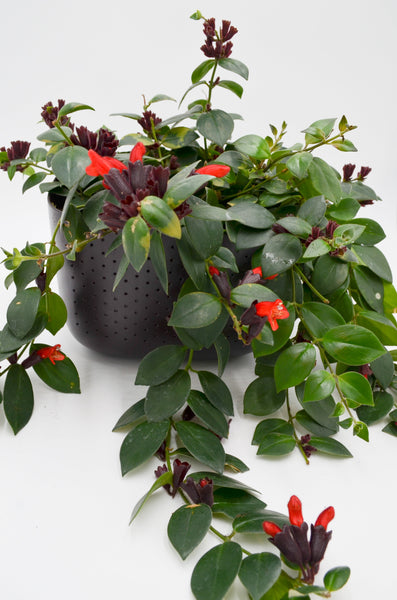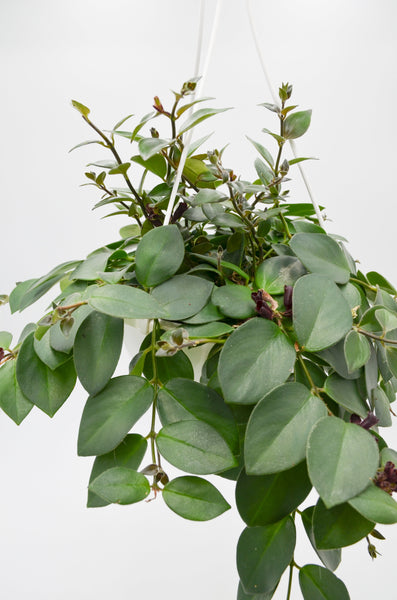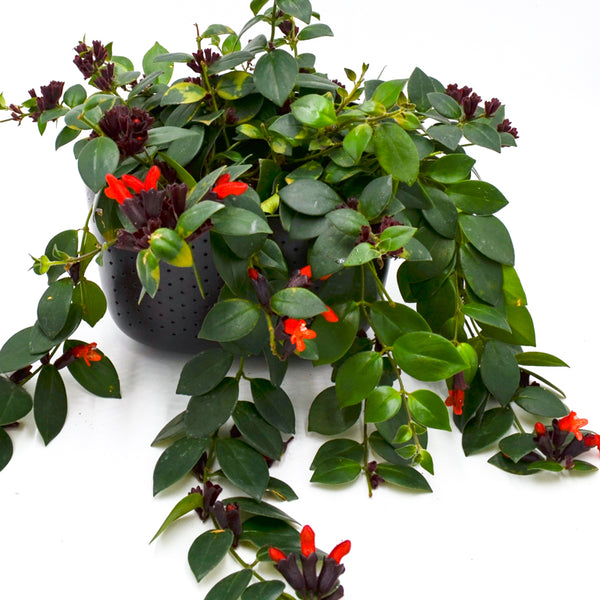Lipstick Plant (Aeschynanthus)
Lipstick plants (Aeschynanthus spp.) are popular houseplants known for their unique, tube-shaped flowers that resemble a lipstick tube emerging from its casing. They are trailing plants that are often grown in hanging baskets. Follow these care instructions to keep your lipstick plant healthy and thriving:
-
Light: Place your lipstick plant in a location with bright, indirect light. It can tolerate some direct sunlight, but prolonged exposure to harsh sunlight can scorch the leaves and cause them to lose their vibrant color.
-
Water: Allow the top 1-2 inches of soil to dry out between waterings. Water your lipstick plant thoroughly until it drains from the bottom of the pot, and then allow the excess water to drain completely. Be cautious not to overwater, as this can lead to root rot.
-
Humidity: Lipstick plants prefer higher humidity levels, as they originate from tropical environments. To increase humidity, you can place a tray filled with water and pebbles underneath the pot, mist the leaves occasionally, or use a humidifier.
-
Temperature: Maintain a temperature range of 65-80°F (18-27°C) for optimal growth. Lipstick plants can tolerate a range of temperatures but avoid exposing them to temperatures below 50°F (10°C) or sudden temperature changes.
-
Fertilizer: Feed your lipstick plant with a balanced liquid fertilizer every 4-6 weeks during the growing season (spring and summer). Use a half-strength solution to avoid over-fertilizing. Reduce feeding to once every 2-3 months during fall and winter.
-
Pruning: Prune your lipstick plant as needed to maintain its shape and size. Remove any yellow or brown leaves and trim the tips if they become damaged. You can also pinch back the growing tips to encourage bushier growth.
-
Repotting: Repot your lipstick plant every 2-3 years or when the roots outgrow the pot. Choose a well-draining potting mix and a pot that is 1-2 inches larger in diameter than the current one. Be gentle when handling the roots, and water the plant thoroughly after repotting.
-
Pest control: Keep an eye out for common pests such as spider mites, aphids, and mealybugs. Treat any infestations with insecticidal soap or neem oil, following the manufacturer's instructions.
Pet-friendly or toxic to pets?
According to the ASPCA, lipstick plants (Aeschynanthus spp.) are non-toxic to cats and dogs. They are considered pet-friendly plants, making them a great option for households with pets that may be prone to chewing on plants. However, it's always best to discourage your pets from chewing on plants, as even non-toxic plants can cause mild digestive upset if ingested in large quantities. If you have concerns about your pet's health, contact your veterinarian.






